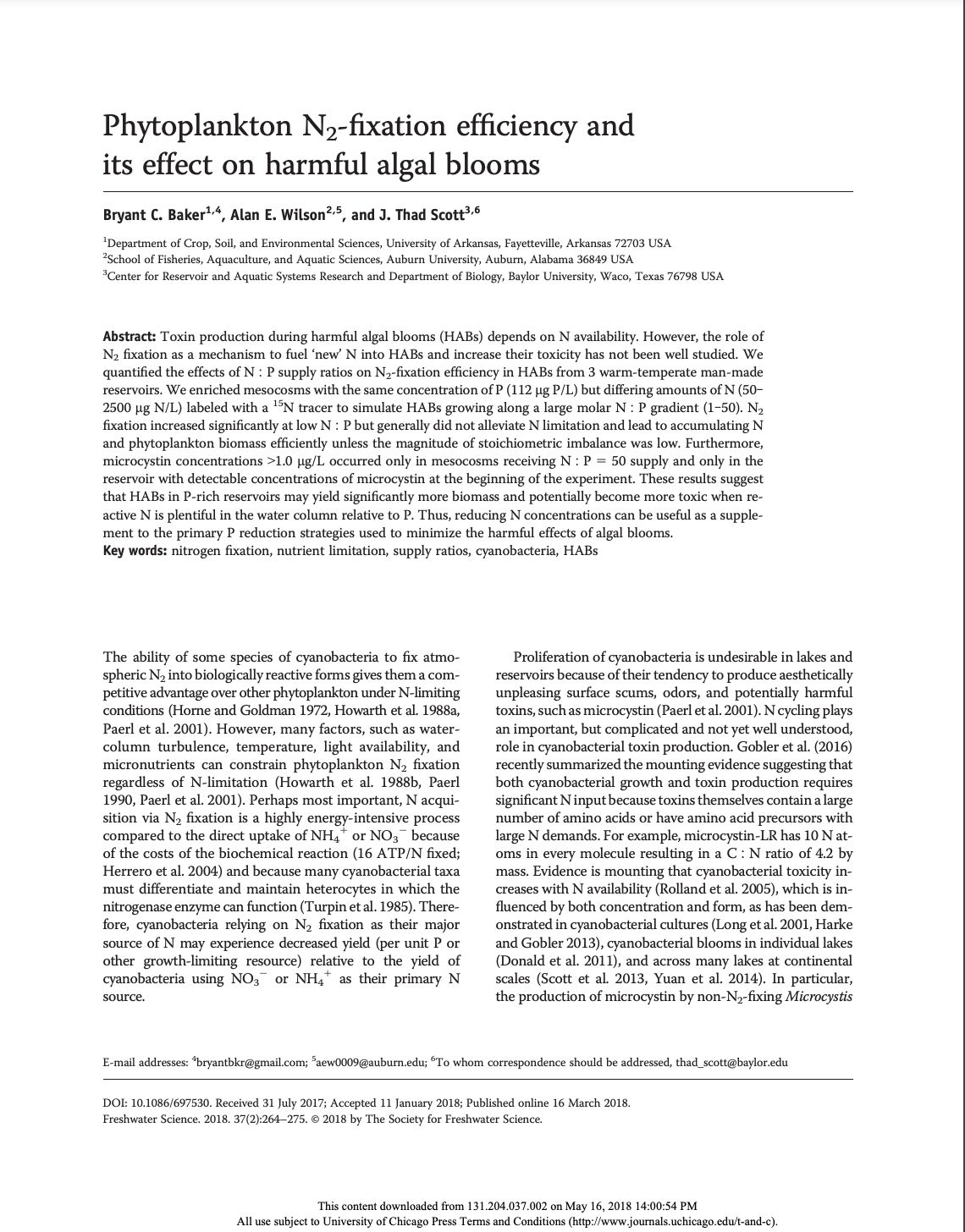
Citation
Baker, B. C., A. E. Wilson, and J. T. Scott. 2018. Phytoplankton N2 fixation efficiency and its effect on harmful algal blooms. Freshwater Science 37(2):264-275.
Abstract
Toxin production during harmful algal blooms (HABs) depends on N availability. However, the role of N2 fixation as a mechanism to fuel ‘new’ N into HABs and increase their toxicity has not been well studied. We quantified the effects of N∶P supply ratios on N2-fixation efficiency in HABs from 3 warm-temperate man-made reservoirs. We enriched mesocosms with the same concentration of P (112 µg P/L) but differing amounts of N (50‒2500 µg N/L) labeled with a 15N tracer to simulate HABs growing along a large molar N∶P gradient (1‒50). N2 fixation increased significantly at low N∶P but generally did not alleviate N limitation and lead to accumulating N and phytoplankton biomass efficiently unless the magnitude of stoichiometric imbalance was low. Furthermore, microcystin concentrations >1.0 µg/L occurred only in mesocosms receiving N∶P = 50 supply and only in the reservoir with detectable concentrations of microcystin at the beginning of the experiment. These results suggest that HABs in P-rich reservoirs may yield significantly more biomass and potentially become more toxic when reactive N is plentiful in the water column relative to P. Thus, reducing N concentrations can be useful as a supplement to the primary P reduction strategies used to minimize the harmful effects of algal blooms.